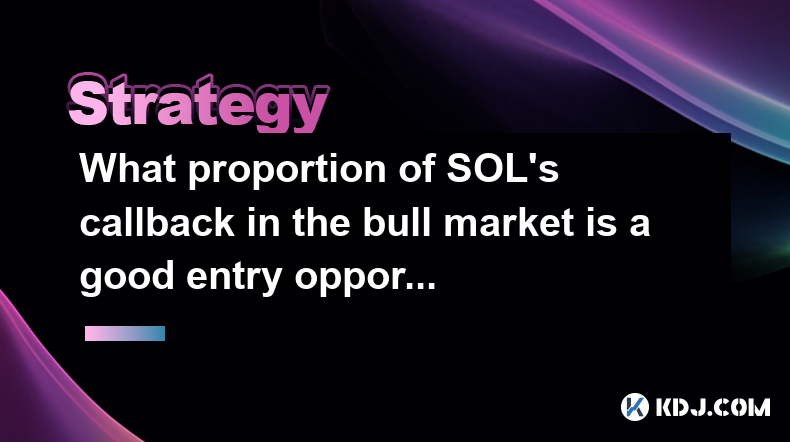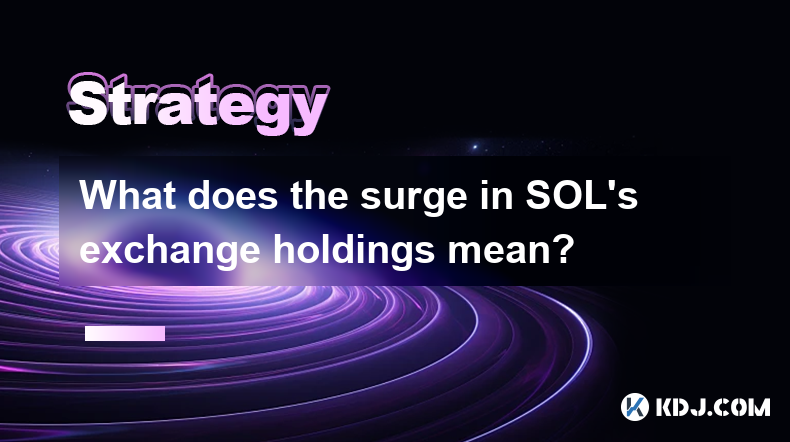-
 Bitcoin
Bitcoin $88,555.6766
1.18% -
 Ethereum
Ethereum $1,626.4043
-1.22% -
 Tether USDt
Tether USDt $0.9998
-0.01% -
 XRP
XRP $2.1018
-1.27% -
 BNB
BNB $605.8750
0.04% -
 Solana
Solana $140.3422
0.04% -
 USDC
USDC $0.9999
0.00% -
 Dogecoin
Dogecoin $0.1643
1.27% -
 TRON
TRON $0.2481
1.05% -
 Cardano
Cardano $0.6359
-1.63% -
 Chainlink
Chainlink $13.3216
-2.53% -
 UNUS SED LEO
UNUS SED LEO $9.1797
-2.79% -
 Avalanche
Avalanche $20.3681
-2.52% -
 Stellar
Stellar $0.2473
-4.43% -
 Sui
Sui $2.3043
2.50% -
 Shiba Inu
Shiba Inu $0.0...01257
-1.15% -
 Toncoin
Toncoin $2.9429
-3.48% -
 Hedera
Hedera $0.1738
0.16% -
 Bitcoin Cash
Bitcoin Cash $347.0587
1.49% -
 Hyperliquid
Hyperliquid $18.2576
-0.35% -
 Litecoin
Litecoin $79.8456
-0.89% -
 Polkadot
Polkadot $3.7809
-4.73% -
 Dai
Dai $0.9999
-0.01% -
 Bitget Token
Bitget Token $4.4439
-0.50% -
 Ethena USDe
Ethena USDe $0.9991
-0.01% -
 Pi
Pi $0.6313
-0.96% -
 Monero
Monero $216.2035
0.57% -
 Pepe
Pepe $0.0...08138
3.46% -
 Uniswap
Uniswap $5.3889
-1.68% -
 OKB
OKB $50.9281
-0.23%
How to identify and utilize market cycles in Ethereum trading?
Understanding market cycles in Ethereum trading allows traders to identify profitable opportunities and minimize risks by buying at undervalued levels during accumulation and taking partial profits near resistance during bull runs, while preparing for potential downtrends during distribution and bear markets.
Feb 25, 2025 at 05:36 pm

Key Points:
- Understand market cycles and their impact on Ethereum trading.
- Identify different phases within a cycle and recognize patterns.
- Use technical analysis and market sentiment indicators to assess market movements.
- Develop strategies based on market cycle insights and profit from fluctuations.
Identifying and Utilizing Market Cycles in Ethereum Trading
Ethereum, like most financial markets, experiences recurring patterns known as market cycles. These cycles consist of predictable phases that offer valuable insights for traders looking to maximize their profits.
1. Market Cycle Structure
A typical market cycle comprises four distinct phases:
a) Accumulation: During this phase, the market exhibits a gradual increase in volume and price. Smart money investors accumulate Ethereum at undervalued levels.
b) Bull Run: Marked by a surge in buying pressure, the market makes a sustained move upwards, reaching new highs. Investors ride the wave of euphoria and FOMO to capitalize on the rally.
c) Distribution: In this phase, the upward momentum wanes as sellers take profits. Market sentiment becomes overly optimistic, leading to overvaluation.
d) Bear Market: A prolonged period of declining prices follows distribution. Fear and pessimism dominate the market, causing investors to sell off their Ethereum holdings.
2. Technical Analysis for Market Cycle Identification
Technical analysis involves studying price charts to identify trends, patterns, and support and resistance levels. The following indicators can reveal insights about market cycles:
a) Moving Averages: These plot the average Ethereum price over a specific period, smoothing out fluctuations and indicating long-term trends.
b) Bollinger Bands: This volatility indicator displays the range within which Ethereum price usually fluctuates. Wider bands signify increased volatility and potential market turning points.
c) Fibonacci Retracements: Derived from price ratios discovered by Leonardo Fibonacci, these levels can predict potential areas where Ethereum price may encounter support or resistance.
3. Market Sentiment Analysis
Market sentiment gauges the overall emotion or attitude towards Ethereum among traders. Indicators like:
a) Fear and Greed Index: This tracks the sentiment of cryptocurrency investors on a scale of extreme fear to extreme greed.
b) Social Sentiment Analysis: Tools monitor social media platforms for mentions and discussions about Ethereum, providing insights into public sentiment.
c) Open Interest: Analysis of open contracts in futures or options markets can reveal the level of bullish or bearish sentiment among traders.
4. Strategies for Utilizing Market Cycles
Understanding market cycles allows traders to develop profitable trading strategies:
a) Accumulation Phase: Buy Ethereum at undervalued levels during accumulation and hold for the upcoming bull run.
b) Bull Run Phase: Ride the upward momentum, trailing stops to protect profits. Sell a portion of your Ethereum as it approaches resistance levels.
c) Distribution Phase: Take partial profits as Ethereum reaches overbought conditions. Watch for signs of a bearish reversal.
d) Bear Market Phase: Short Ethereum or trade cautiously until the market reverses. Look for opportunities to buy at support levels.
FAQs on Ethereum Market Cycles
Q: How long does a market cycle typically last?
A: Ethereum market cycles vary in duration, but they typically range from a few months to a few years.
Q: What are the main risks associated with market cycles?
A: The primary risks include buying at overvalued levels during a bull run and selling prematurely during a bear market.
Q: How can I minimize the risk of losses during market cycles?
A: Utilize stop-loss orders to protect profits, manage your risk-to-reward ratio, and avoid trading based on emotions.
Q: Are there any tools or resources that can help me track market cycles?
A: Various websites and platforms provide market cycle indicators, technical analysis tools, and sentiment analysis dashboards.
Disclaimer:info@kdj.com
The information provided is not trading advice. kdj.com does not assume any responsibility for any investments made based on the information provided in this article. Cryptocurrencies are highly volatile and it is highly recommended that you invest with caution after thorough research!
If you believe that the content used on this website infringes your copyright, please contact us immediately (info@kdj.com) and we will delete it promptly.
- U.S. Digital Asset Firms Are Reportedly Considering Applying for Bank Charters and Licenses
- 2025-04-22 15:40:12
- OM Slides Deeper as Massive Token Burn Falls Flat
- 2025-04-22 15:40:12
- Ethereum Crashes, Its Share of the Overall Virtual Asset Market Fell Below 7%
- 2025-04-22 15:35:12
- Dogecoin Community Celebrates Dogeday 4/20, Buoyed by ETF Filing Buzz
- 2025-04-22 15:35:12
- ZetaChain Integrates Arbitrum to Offer Streamlined Universal App Usage
- 2025-04-22 15:30:12
- Deutsche Bank and Standard Chartered Are Expanding Their Crypto Operations in the United States
- 2025-04-22 15:30:12
Related knowledge

How to use trading volume to determine the buying and selling timing of BCH?
Apr 22,2025 at 04:14pm
Trading volume is a critical indicator that traders use to gauge the strength and direction of market trends, and it can be particularly useful when determining the buying and selling timing of Bitcoin Cash (BCH). By analyzing the trading volume, investors can gain insights into the market sentiment and make more informed decisions about when to enter o...

What proportion of SOL's callback in the bull market is a good entry opportunity?
Apr 22,2025 at 03:43pm
The question of what proportion of SOL's callback in a bull market represents a good entry opportunity is a nuanced one, requiring a deep dive into market dynamics, historical data, and risk management strategies. Let's explore this topic in detail. Understanding SOL and Bull MarketsSolana (SOL) is a high-performance blockchain platform known for its fa...

Can BCH's Willy indicator be bottomed out in the oversold area?
Apr 22,2025 at 02:56pm
Understanding the Willy IndicatorThe Willy indicator, also known as the Willy ratio, is a technical analysis tool used in the cryptocurrency market to assess the potential for a price reversal. It is calculated by dividing the current price of a cryptocurrency by its 200-day moving average. When the Willy indicator falls into the oversold area, it sugge...

What does the surge in SOL's exchange holdings mean?
Apr 22,2025 at 04:07pm
The recent surge in SOL's exchange holdings has sparked considerable interest and debate within the cryptocurrency community. SOL, the native token of the Solana blockchain, has seen a notable increase in the amount of tokens held on various cryptocurrency exchanges. This phenomenon can have several implications for the token's price, market sentiment, ...

What to do if SHIB's HODL wave indicator shows loose chips?
Apr 21,2025 at 03:07pm
If the SHIB's HODL wave indicator shows loose chips, it suggests that a significant portion of the SHIB holders are selling their tokens, potentially leading to increased volatility and a possible price drop. Understanding how to navigate this situation is crucial for any SHIB investor. This article will guide you through the steps to take when you noti...

Is it a risk that SHIB's derivatives position is 3 times that of the spot?
Apr 20,2025 at 12:35am
Is it a risk that SHIB's derivatives position is 3 times that of the spot? The cryptocurrency market is known for its volatility and high-risk nature, and Shiba Inu (SHIB) is no exception. One of the metrics that traders and investors closely monitor is the ratio of derivatives to spot positions. SHIB's derivatives position being three times that of the...

How to use trading volume to determine the buying and selling timing of BCH?
Apr 22,2025 at 04:14pm
Trading volume is a critical indicator that traders use to gauge the strength and direction of market trends, and it can be particularly useful when determining the buying and selling timing of Bitcoin Cash (BCH). By analyzing the trading volume, investors can gain insights into the market sentiment and make more informed decisions about when to enter o...

What proportion of SOL's callback in the bull market is a good entry opportunity?
Apr 22,2025 at 03:43pm
The question of what proportion of SOL's callback in a bull market represents a good entry opportunity is a nuanced one, requiring a deep dive into market dynamics, historical data, and risk management strategies. Let's explore this topic in detail. Understanding SOL and Bull MarketsSolana (SOL) is a high-performance blockchain platform known for its fa...

Can BCH's Willy indicator be bottomed out in the oversold area?
Apr 22,2025 at 02:56pm
Understanding the Willy IndicatorThe Willy indicator, also known as the Willy ratio, is a technical analysis tool used in the cryptocurrency market to assess the potential for a price reversal. It is calculated by dividing the current price of a cryptocurrency by its 200-day moving average. When the Willy indicator falls into the oversold area, it sugge...

What does the surge in SOL's exchange holdings mean?
Apr 22,2025 at 04:07pm
The recent surge in SOL's exchange holdings has sparked considerable interest and debate within the cryptocurrency community. SOL, the native token of the Solana blockchain, has seen a notable increase in the amount of tokens held on various cryptocurrency exchanges. This phenomenon can have several implications for the token's price, market sentiment, ...

What to do if SHIB's HODL wave indicator shows loose chips?
Apr 21,2025 at 03:07pm
If the SHIB's HODL wave indicator shows loose chips, it suggests that a significant portion of the SHIB holders are selling their tokens, potentially leading to increased volatility and a possible price drop. Understanding how to navigate this situation is crucial for any SHIB investor. This article will guide you through the steps to take when you noti...

Is it a risk that SHIB's derivatives position is 3 times that of the spot?
Apr 20,2025 at 12:35am
Is it a risk that SHIB's derivatives position is 3 times that of the spot? The cryptocurrency market is known for its volatility and high-risk nature, and Shiba Inu (SHIB) is no exception. One of the metrics that traders and investors closely monitor is the ratio of derivatives to spot positions. SHIB's derivatives position being three times that of the...
See all articles























































































